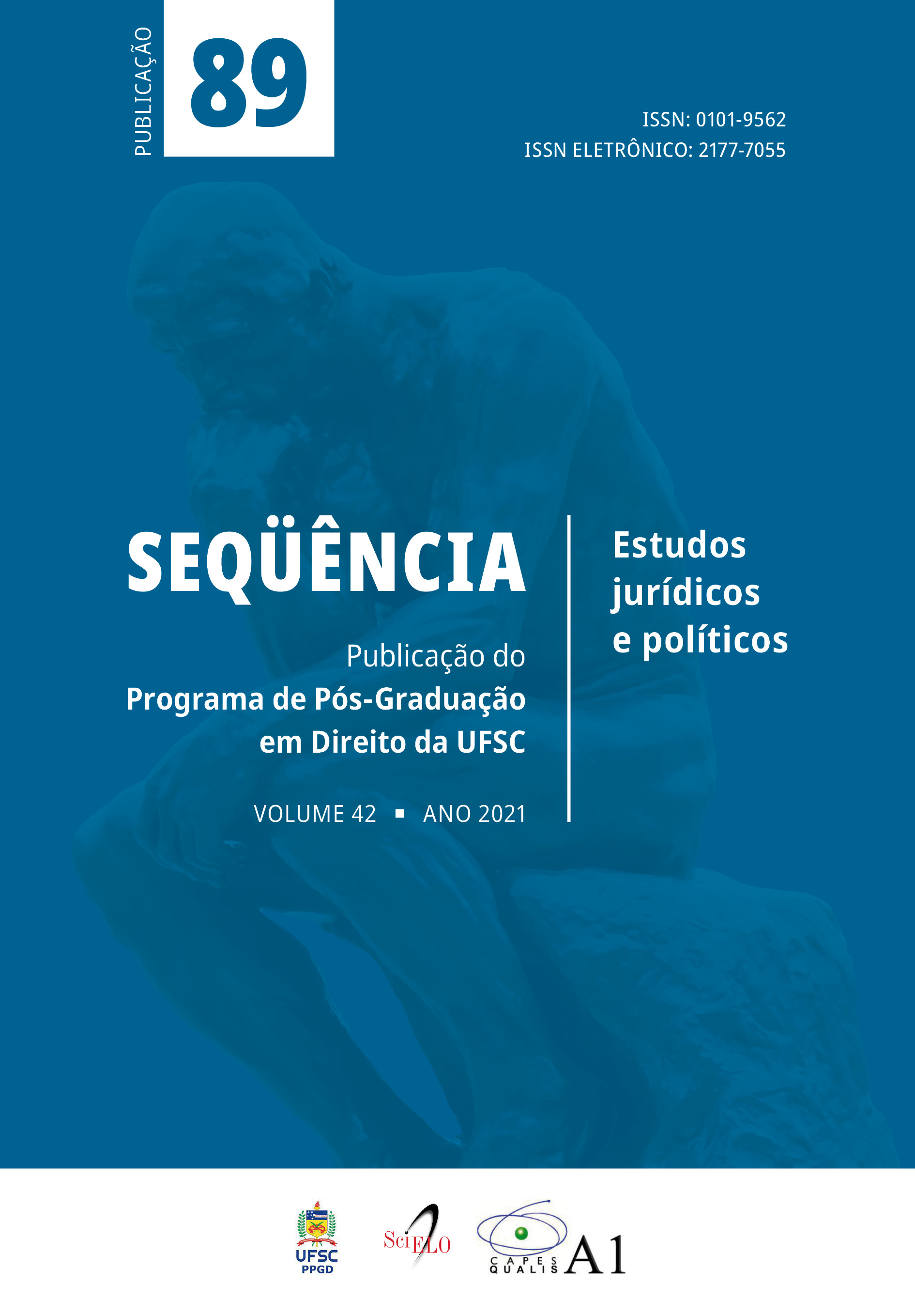Disorder and chaos: the troubled universe of local mining chains in the First Republic (1890-1914)
DOI:
https://doi.org/10.5007/2177-7055.2021.e73647Abstract
The article that begins is dedicated to presenting the results obtained from the doctoral research funded by CAPES defended in December 2018 with the Graduate Program in History at UFMG. The presented thesis was built based on the partial analysis of sources available in the background of the Chief of Police of the Public Archives of Minas Gerais, by confronting the reports of the police chief of the state of Minas Gerais, the reports of prosecutors and correspondence issued by the delegates of mining towns in the period between 1890 (when the Brazilian penal code came into force and the urbanization process gained strength in the Southeast region) and 1914 (when the proximity to the First World War caused issues related to public security to remain in the background) . The proposed dialogue proved to be productive due to the fact that they are sources that deal with related themes - that is, the police, criminal and prison universe - from different perspectives, making the analysis of the mentioned context very useful. It is pertinent to remember that when researching the mining chains located next to the local police stations, it became possible to trace a microcosm of the problems that plagued the Brazilian prison environment during the first decades of the First Republic (1889-1930).
References
AGUIRRE, Carlos. Cárcere e sociedade na América Latina, 1800 - 1940. In: MAIA, Clarissa Nunes (org.) . História das prisões no Brasil. Rio de Janeiro: Rocco, 2009, volume 1.
CANCELLI, Elizabeth. Repressão e controle prisional no Brasil: prisões comparadas. História: Questões & Debates, Curitiba, n. 42, p. 141-156, 2005. Editora UFPR. Disponível em http%3A%2F%2Fojs.c3sl.ufpr.br%2Fojs2%2Findex.php%2Fhi storia%2Farticle%2Fdownload%2F4648%2F3804&ei=Def2UfSiCZKO9ATr0o DIBQ& usg=AFQjCNHHMITxDiK46oanmde0GpJgbAdtzg. Acesso em 16 de julho de 2013.
FAUSTO, Boris. Controle social e criminalidade em São Paulo: um apanhado geral (1890-1924). In: PINHEIRO, Paulo Sergio (org.). Crime, violência e poder. São Paulo: Brasiliense, 1983, p. 193-224.
FAUSTO, Boris. Crime e cotidiano: a criminalidade em São Paulo: (1880-1924). 2. ed. São Paulo: EDUSP, 2001.
GEERTZ, Clifford. A interpretação das culturas. Rio de Janeiro: LTC, 2008.
GALVAO, Walnice Nogueira. Prezado senhor, prezada senhora: estudos sobre cartas. São Paulo: Companhia das Letras.
GOMES, Angela Maria de Castro. Escrita de si, escrita da história. Rio de Janeiro: Ed. FGV, 2004.
GRINBERG, Keila. A história nos porões dos arquivos judiciários. In: Carla Pinski e Tânia de Luca. In: PINSKY, Carla Bassanezi.; DE LUCA, Tania Regina. O historiador e suas fontes. São Paulo: Editora Contexto, 2009, p.119-140.
HOLLOWAY, Thomas. O calabouço e o aljube do Rio de Janeiro no século XIX. In: MAIA, Clarissa Nunes et al. História das prisões no Brasil. Rio de Janeiro: Editora Rocco, 2009, vol. II, p. 253-281.
MAIA, Clarissa Nunes (org.) . História das prisões no Brasil. Rio de Janeiro: Rocco, 2009, volume 1.
MAIA, Clarisse Nunes. História e historiografia das prisões. In: MAIA, Clarissa Nunes (org.) . História das prisões no Brasil. Rio de Janeiro: Rocco, 2009, volume 1, p. 9 - 34.
MALATIAN, Teresa. Narrador, registro e arquivo. In: PINSKY, Carla Bassanezi.; DE LUCA, Tania Regina. O historiador e suas fontes. São Paulo: Editora Contexto, 2009, p.195-222.
PERROT, Michelle (org). L' impossible prision – Recherches sur le système pénitentiaire au XIX siècle. Seuil, 1980.
PERROT, Michelle. O inspetor Bentham – Le Panoptique, Paris: P. Belfond, 1977. In: BENTHAM, Jeremy et. al [organização de Tomaz Tadeu]. O Panóptico. 2. ed. Belo Horizonte: Autêntica Editora, 2008, p. 127 - 172.
PERROT, Michelle. Os excluídos da história: operários, mulheres e prisioneiros [seleção de textos e introdução de Stella Bresciani]; tradução, Denise Bottmann. Rio de Janeiro: Paz e Terra, 2001.
ROSEMBERG, André; SOUZA, Luís Antônio Francisco de. Notas sobre o uso de documentos judiciais como fonte de pesquisa histórica. Patrimônio e Memória, v. 5, n. 2, p. 159-173, dezembro/2009. Disponível em http://hdl.handle.net/11449/108033 . Acesso em 29 de Agosto de 2016.
SANTANA, Aline Passos de Jesus. A disciplina carcerária na sociedade de controle: uma análise genealógica do Regime Disciplinar Diferenciado. 2011. Dissertação (Mestrado em Ciências Sociais) – Pontifícia Universidade Católica de São Paulo. São Paulo, p. 12-86. Disponível em http://www.sapientia.pucsp.br/tde_arquivos/8/TDE-2012-01-30T06:35:47Z12039/Publico/Aline%20Passos%20de%20Jesus%20Santana.pdf .Acesso em 21 de julho de 2013.
VELLASCO, Ivan de Andrade As seduções da ordem: violência, criminalidade e administração da justiça, Minas Gerais, século 19. Bauru: EDUSC, Anpocs, 2004.
Downloads
Published
How to Cite
Issue
Section
License

This work is licensed under a Creative Commons Attribution-NonCommercial-NoDerivs 3.0 Unported License.























